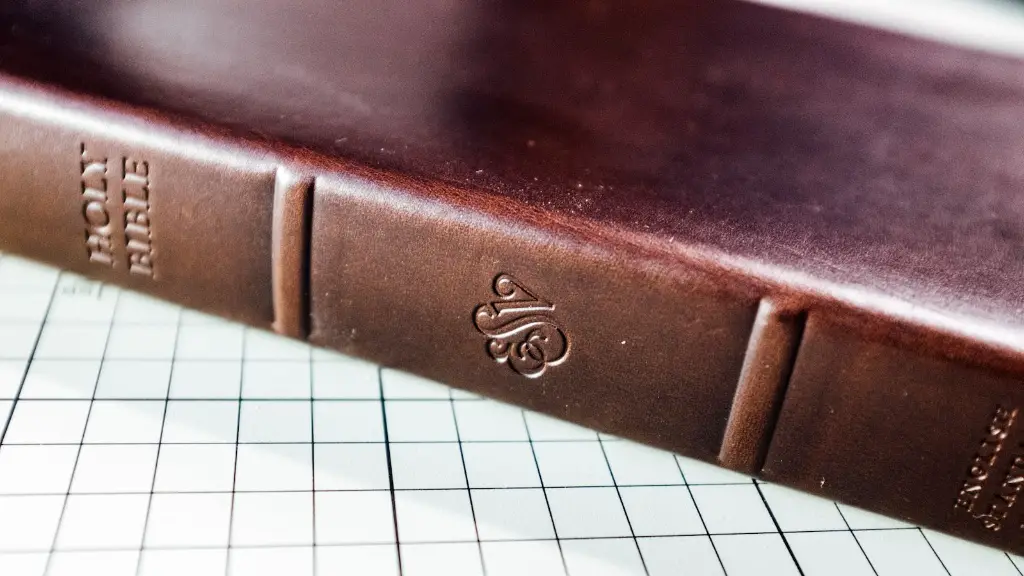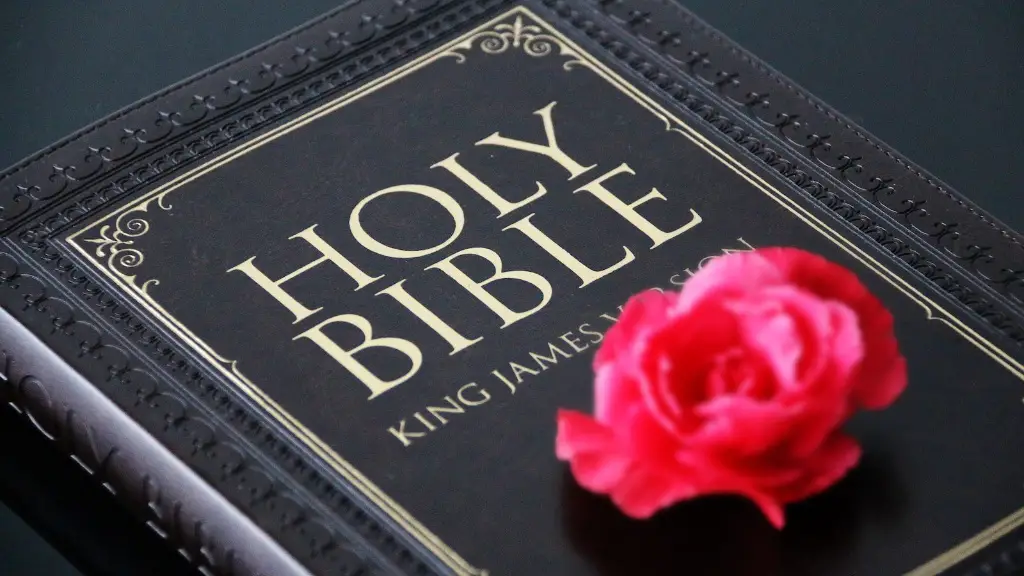Where Is The Garden Of Eden In The Bible
The Garden of Eden is one of the most mysterious places in the Bible. It is mentioned in several books: Genesis, Ezekiel, and Song of Songs, among others. Its exact location is unknown, but scholars have proposed many theories. It has been suggested that the Garden of Eden could be located somewhere in what is now Iraq and Turkey.
The biblical story of Adam and Eve suggests that the Garden of Eden was a paradise. It was an idyllic setting described in the Bible with rivers that emanated from a single source in four directions, lush vegetation and plentiful food. God placed the Tree of Life and the Tree of Knowledge in the Garden. God also gave Adam and Eve the task of living in the Garden and tending to it. They disobeyed by eating from the Tree of Knowledge, leading to their banishment.
Today, the Garden of Eden remains an intriguing mystery. Many people have speculated about its location and attempted to find archaeological evidence of its existence. Some experts theorize that it may have been located in the Middle East, specifically in what is now Iraq and Turkey. The Tigris and Euphrates Rivers that are mentioned in the Bible can be found in modern-day Iraq and the area it encompassed may have provided an ideal setting for the Garden.
In addition to the geographical evidence, some experts have argued that the Garden of Eden may have also been located in Mesopotamia. Mesopotamia was one of the first civilizations and is thought to be the cradle of civilization. It was a thriving city with a complex irrigation system, monuments, and streets.
Many believe that Eden could have been situated in the heart of Mesopotamia near the “fertile crescent.” An ancient Akkadian tablet, known as the Eridu Genesis, has been used to suggest that the Garden of Eden was located in the Tigris-Euphrates Delta. This tablet is said to have been written by an ancient Babylonian priest in the sixth century.
Whether or not the Garden of Eden actually existed or is solely a myth is open to debate, but it is clear that the Garden of Eden is a pivotal part of biblical history and one of the most mysterious places of the Bible. As more and more archaeological evidence is unearthed, more theories will likely arise.
Was the Garden of Eden A Place Of Peace and Tranquility?
The Garden of Eden is described in the book of Genesis as a beautiful and peaceful garden where God and Adam and Eve dwelled in harmony. It is said that the garden was full of abundant fruits and vegetation, as well as four rivers flowing from it. Despite all of its beauty, the Garden of Eden proved to be a place of turmoil and disobedience when Adam and Eve ate from the Tree of Knowledge.
God appeared to have created the Garden of Eden specifically to test humans and the limits of their obedience. Adam and Eve’s decision to eat from the Tree of Knowledge forced them to confront the possibility of sin and to ponder the implications of disobeying God’s commands. As a result, humans have been struggling with questions of morality and free will ever since.
The biblical text also implies that the Garden was intended to be a place of refuge from hardship and a reward for people that serve God. After Adam and Eve’s banishment, God promised Adam that if he chose to obey God’s rules to the best of his ability and to serve him, he would be allowed to return to the Garden. However, Adam and Eve chose to disobey, and they were subsequently expelled from the Garden.
The Garden of Eden has become a symbol of a perfect world. Its image of tranquility and beauty has resonated with many over the centuries, and it has been romanticized in many works of art and literature. For many, it is the idea of a harmonious and peaceful existence that has our attention.
Biblical Significance Of the Garden of Eden
The Garden of Eden is an important part of biblical history and understanding its true significance requires careful analysis of the scriptures. According to many Christian theologians, the Garden of Eden is where human life began and its significance lies in it being a reflection of God’s love and faithfulness. The Garden of Eden was created as a refuge for Adam and Eve and as a place for them to dwell in obedience to Him.
The Garden of Eden is also a powerful symbol of the dangerous consequences of disobedience. Adam and Eve were banished from the Garden of Eden due to their disobedience and this has become a metaphor for the consequences of sin and a reminder of God’s justice. The story of Adam and Eve also serves as a powerful reminder of the importance of living in obedience to God’s commands.
The Garden of Eden also represents a place of hope and redemption. Even after their banishment, God continued to love and care for Adam and Eve and it is said that one day God will restore the Garden of Eden and its beauty. Therefore, it is seen as an oasis of hope and a reminder of God’s promise of restoration. It is a source of inspiration and hope, and a reminder that despite our disobedience God still loves us and promises a better future.
The Garden of Eden has been a source of fascination since ancient times and its importance resonates in a number of ways. It is the symbol of what life could have been and the consequences of disobedience, as well as a source of hope and redemption. Its exact location remains an enigma, but its importance will remain in the collective consciousness.
Evidence To Support The Location of The Garden of Eden
While its exact location remains a mystery, there is some evidence to suggest that the Garden of Eden may have been located in the Middle East. The Tigris and Euphrates Rivers, which are mentioned in the Bible, can be found in modern-day Iraq and the area associated with these rivers encompasses what is commonly known as the “fertile crescent”. Furthermore, archaeological evidence has been uncovered in ancient Mesopotamia which could suggest the possibility of the Garden of Eden being located near the “fertile crescent”.
The ancient Akkadian tablet, known as the Eridu Genesis, appears to suggest that the Garden was located in the Tigris-Euphrates Delta. This tablet was written in the sixth century and it is believed to have been written by a Babylonian priest. Furthermore, there have been suggestions that the Garden of Eden is mentioned in the Epic of Gilgamesh, which has also been found in ancient Mesopotamia.
The Bible also provides some clues as to the location of the Garden. One verse specifically mentions that the Garden of Eden was located east of the present day land of Israel. In addition, the Bible mentions several geographic features that are found in modern-day Iraq and Turkey, including the Tigris and Euphrates rivers.
While the ultimate location of the Garden of Eden remains a mystery, there is some evidence to suggest it could have been located near modern-day Iraq and Turkey. This evidence includes the geographical features mentioned in the Bible, as well as archaeological finds in ancient Mesopotamia.
Physical Description Of the Garden of Eden
The Bible describes the Garden of Eden as an idyllic paradise. It is a lush and beautiful garden with plentiful vegetation and abundant fruits. The rivers that emanated from it in four directions provided water for the garden and the Tree of Life and the Tree of Knowledge were placed in its center.
In the book of Genesis, the Garden of Eden is said to be surrounded by a hedge of protection and guarded by an angel. This emphasizes the importance that God placed on the Garden and suggests that it was a sacred and special place. The physical layout of the Garden is unclear and it is not clear how large it was, however, it has been speculated that it could have been as large as modern-day Iraq and Turkey.
The Garden of Eden also suggests the idea of a perfect world, where Adam and Eve were able to live in innocence and peace with God. It was a refuge from the hardships of the world and a reward for those who serve and obey God. The Garden of Eden is an important part of the Bible, and its beauty and mystery have captivated minds for centuries.
The Garden of Eden In Art and Culture
The Garden of Eden has had a profound impact on art and culture throughout the centuries. Throughout history, the Garden of Eden has been a source of fascination and inspiration for artists, writers, and poets. Its beauty and tranquility have been romanticized in art, literature, music, and film.
In literature, the Garden of Eden has been associated with love, peace, and harmony. For example, John Milton’s Paradise Lost is considered to be one of the most influential works of literature and it is a retelling of the biblical story of the Garden of Eden. Furthermore, the Garden of Eden has been used as a metaphor for paradise in many works, including Shakespeare’s Sonnets and William Blake’s poetry.
In art, the Garden of Eden has often been depicted in paintings and sculptures. Many artists have captured the beauty and tranquility of the Garden, such as Fra Angelico’s The Garden of Eden, Sandro Botticelli’s The Garden of Eden, and Jan Brueghel the Elder’s The Garden of Eden.
The Garden of Eden has captivated minds for centuries and its mythical beauty has been romanticized in art and literature. Its association with love, peace, and harmony continues to resonate with many across the globe and its image of beauty, innocence, and redemption will remain in our collective consciousness for generations to come.





